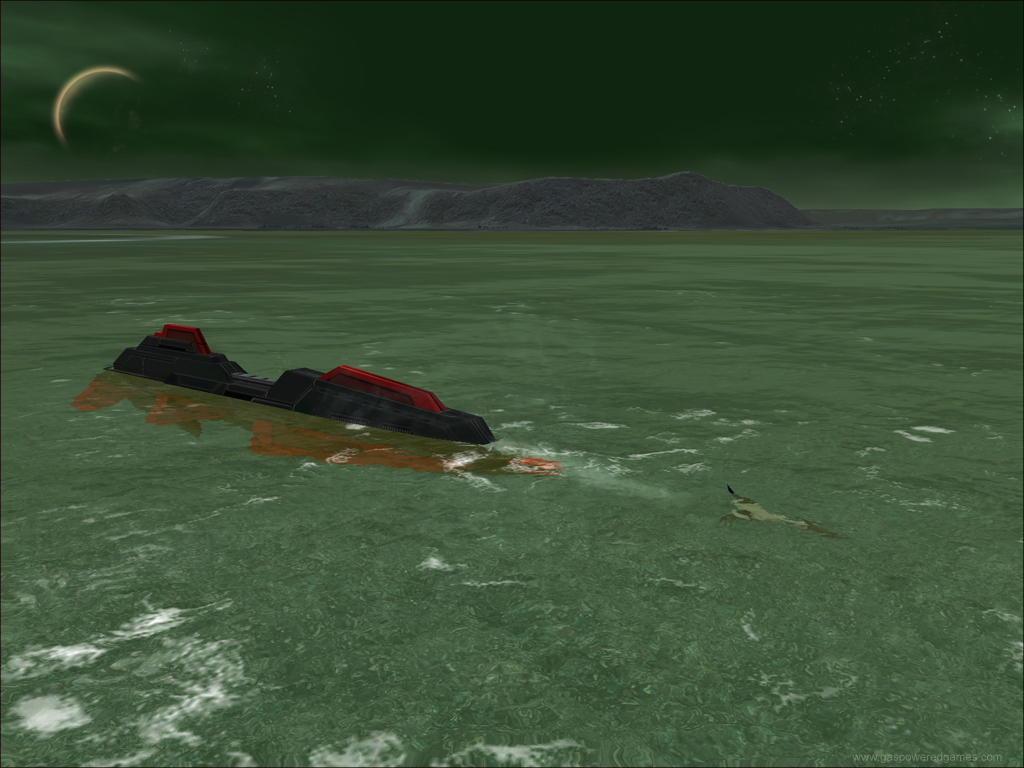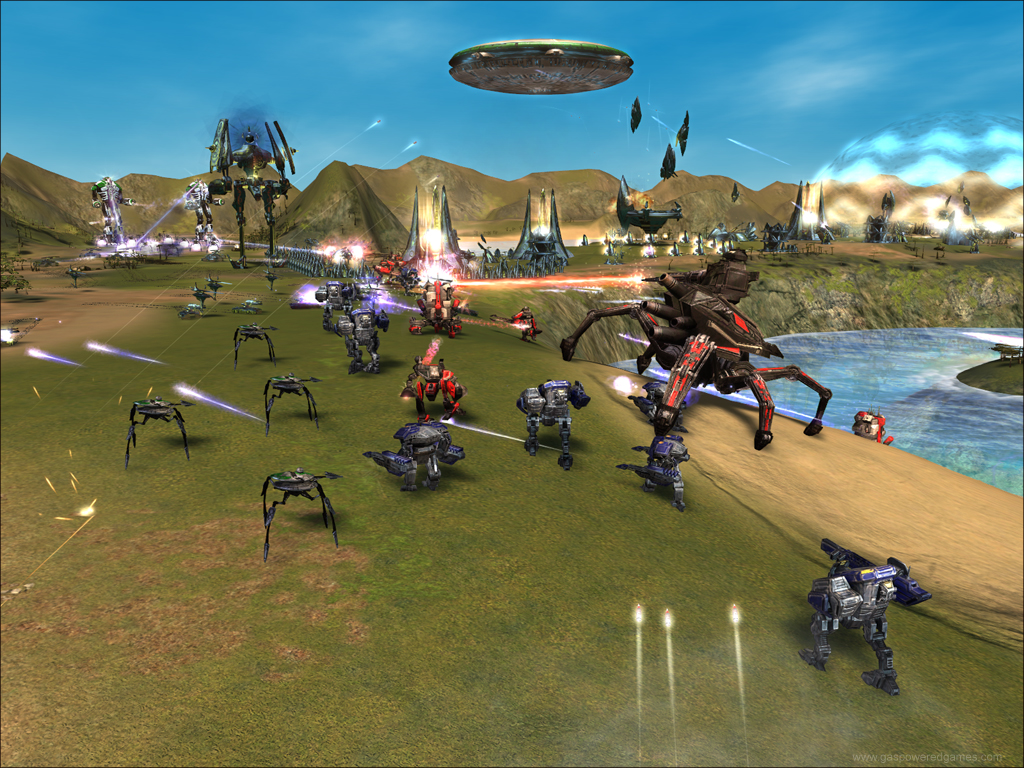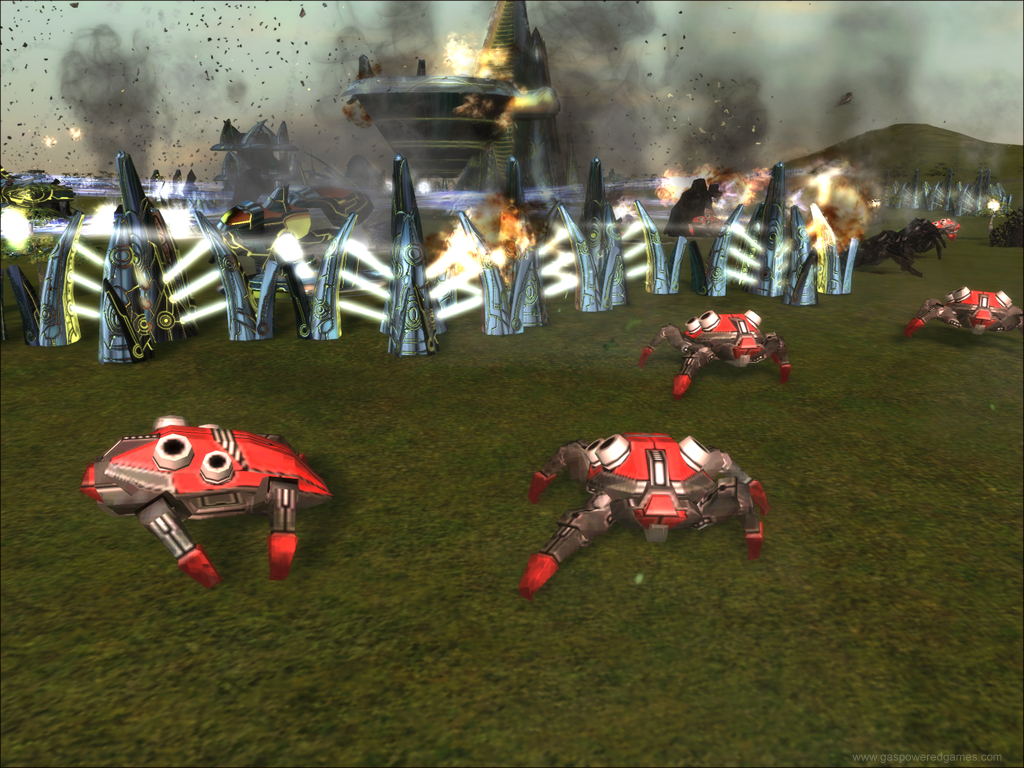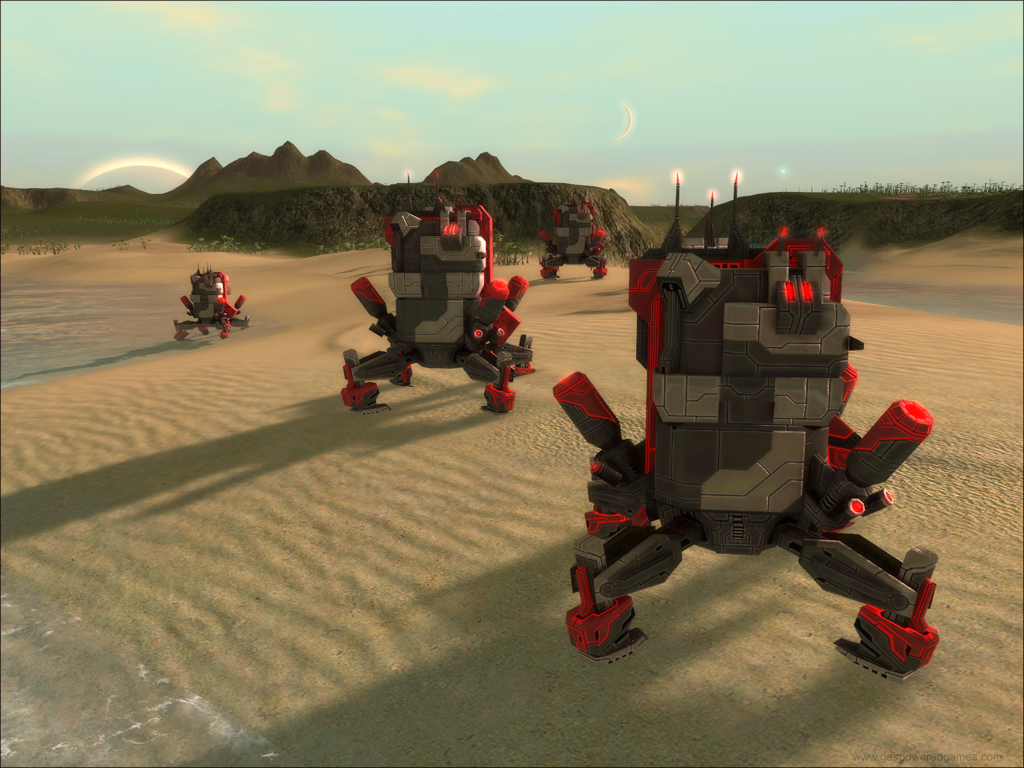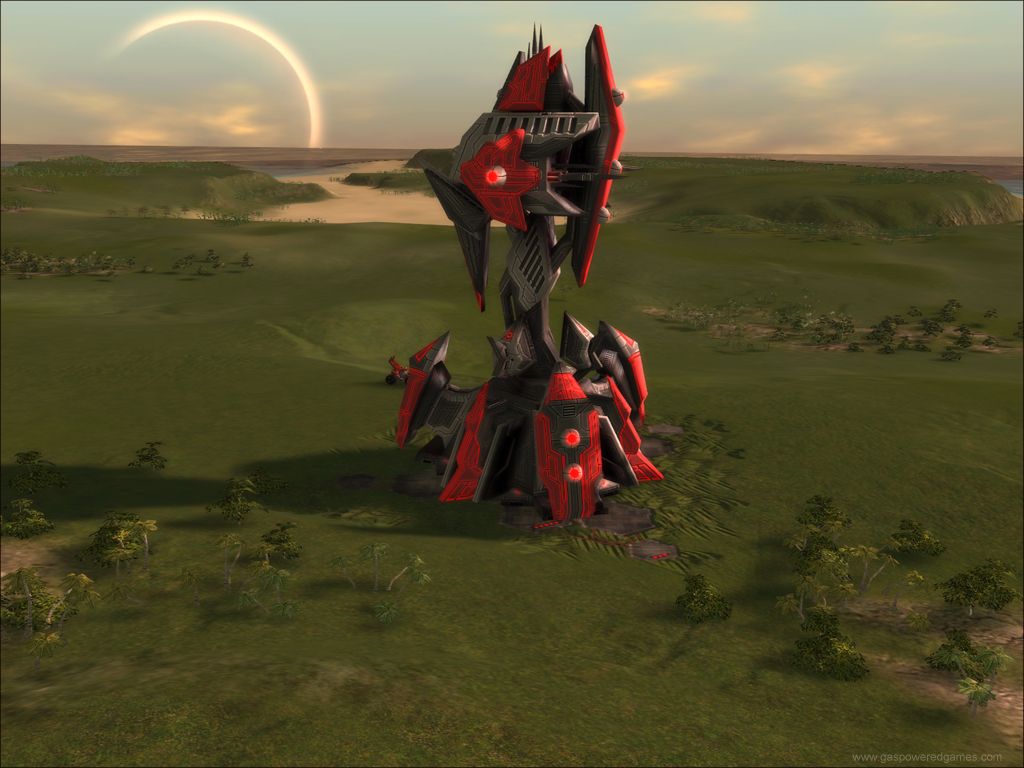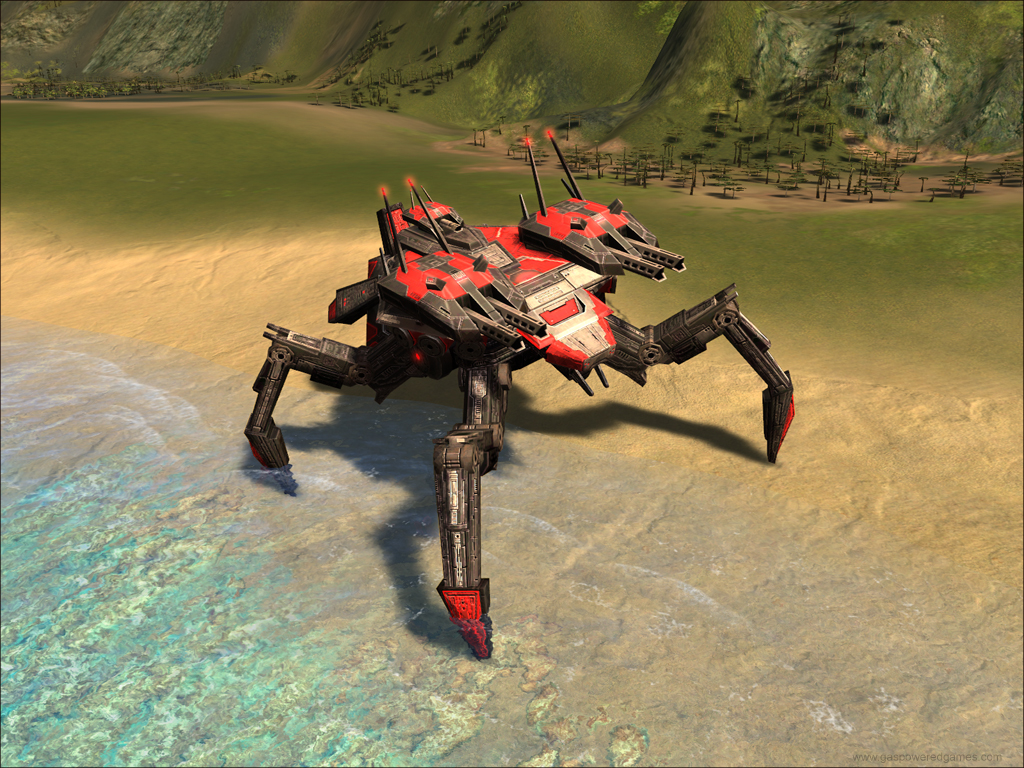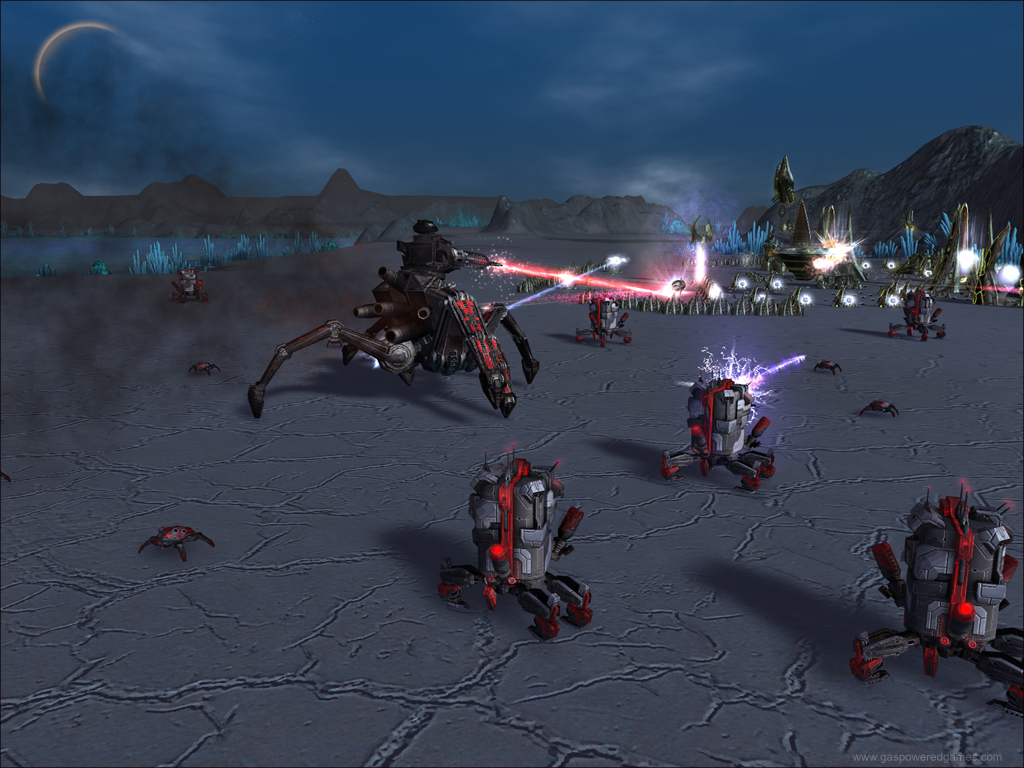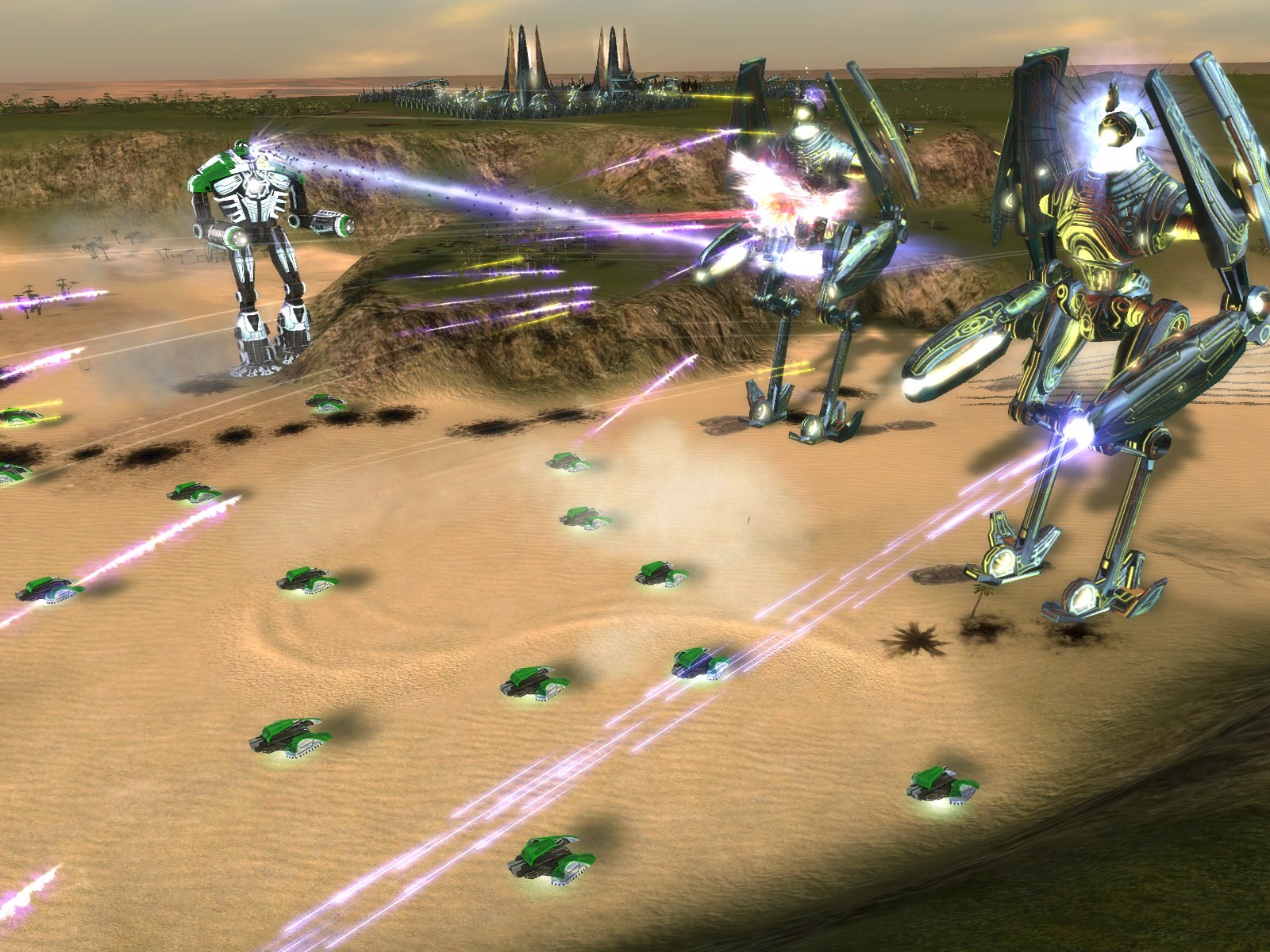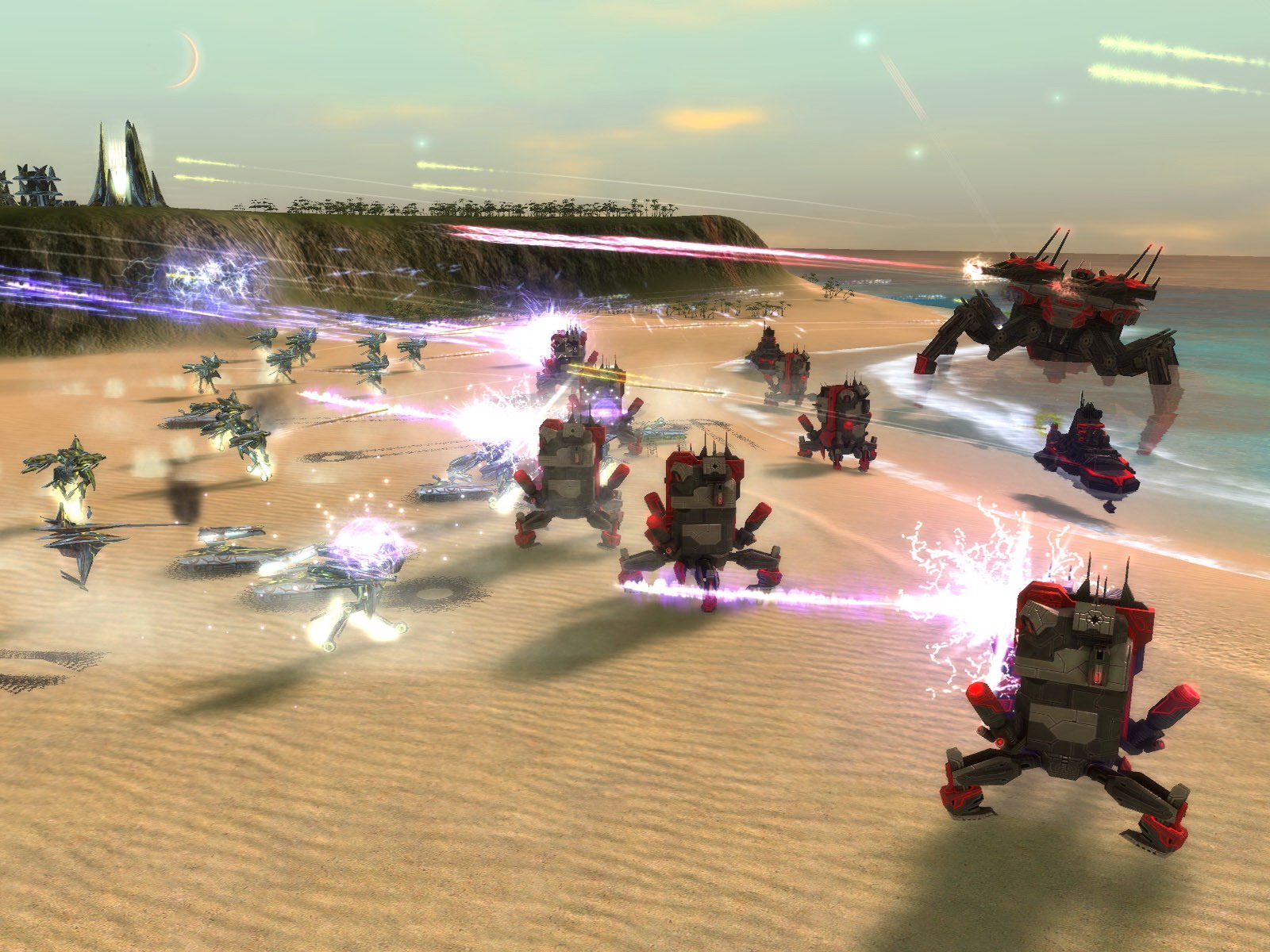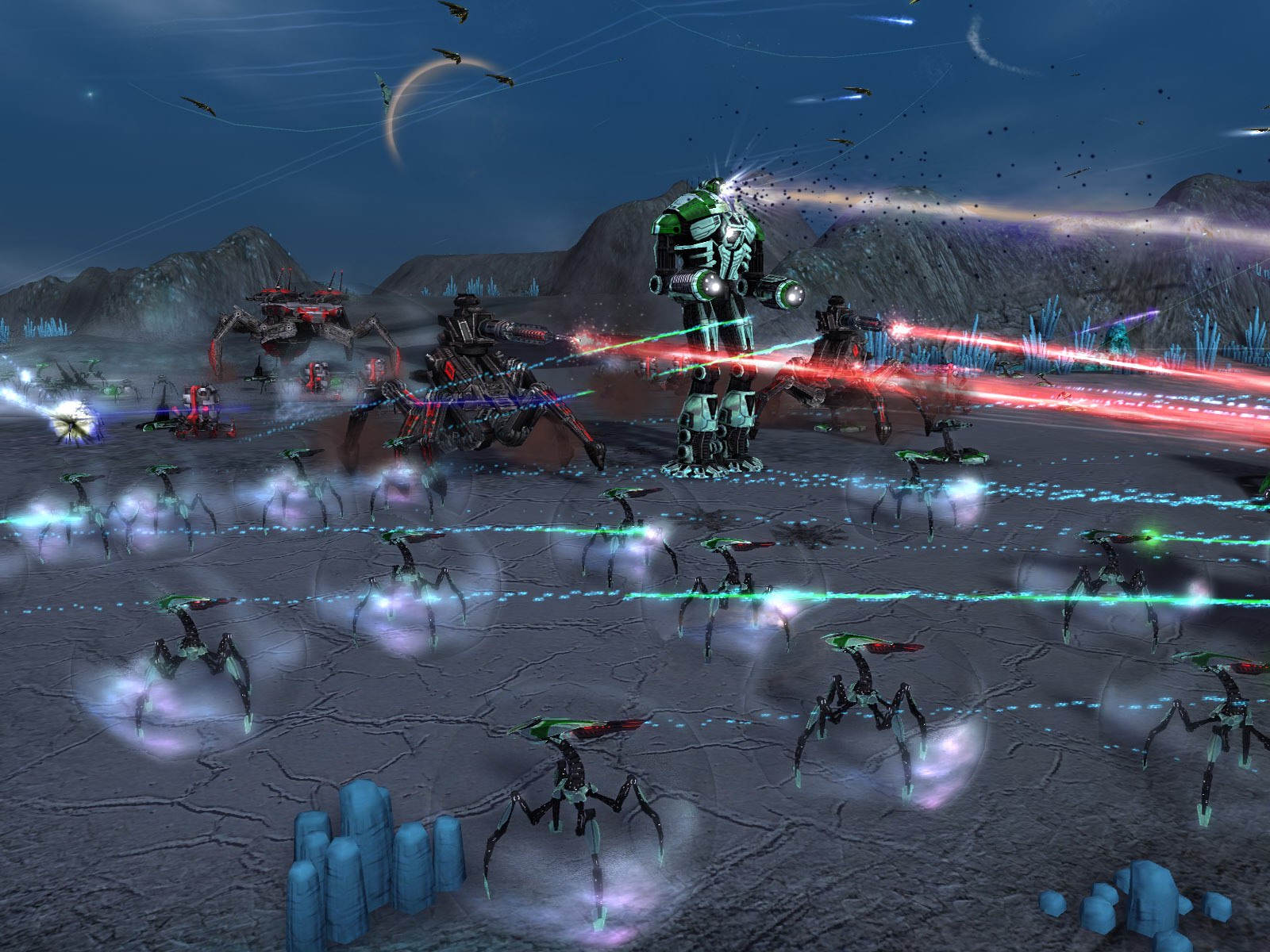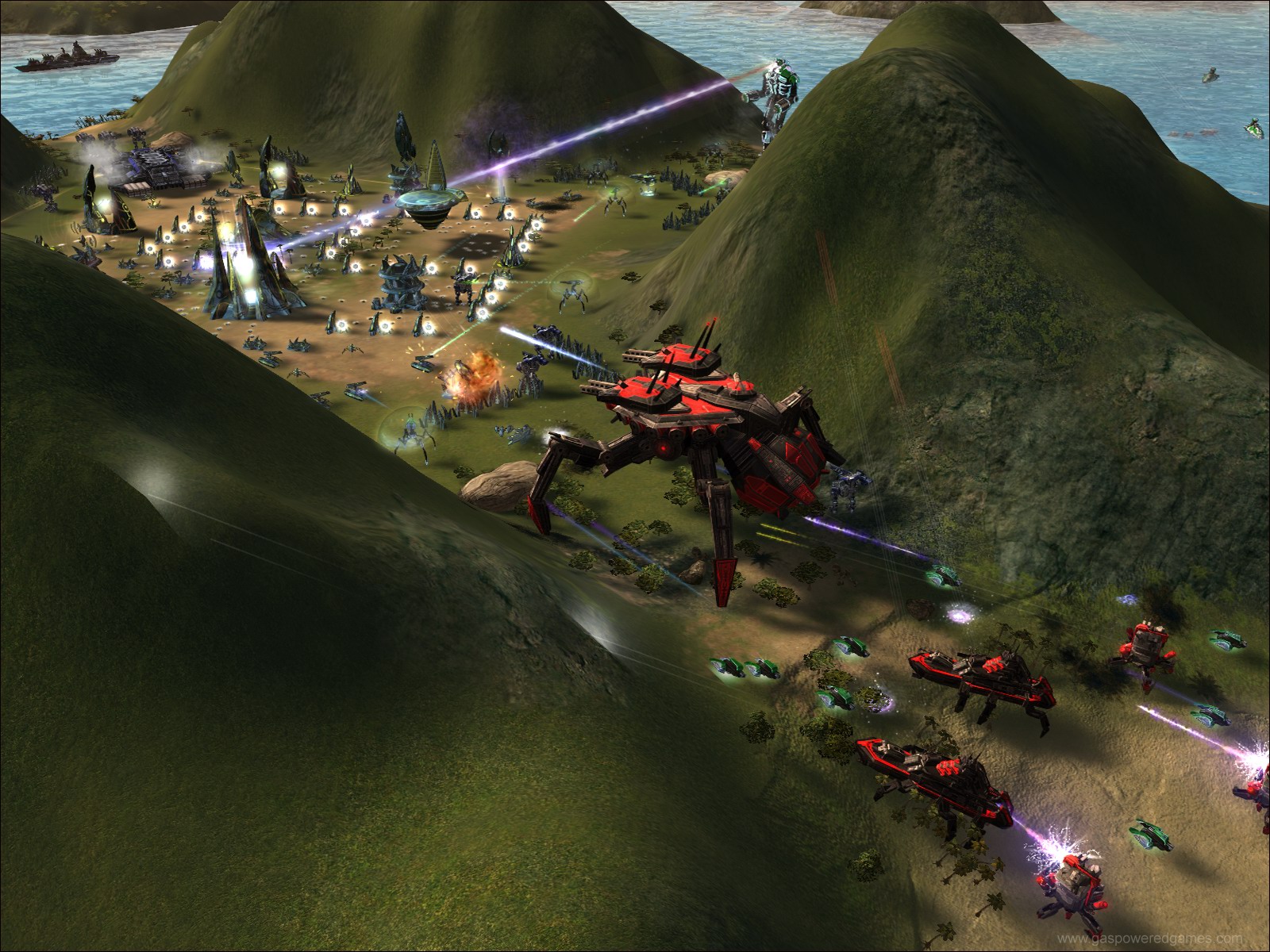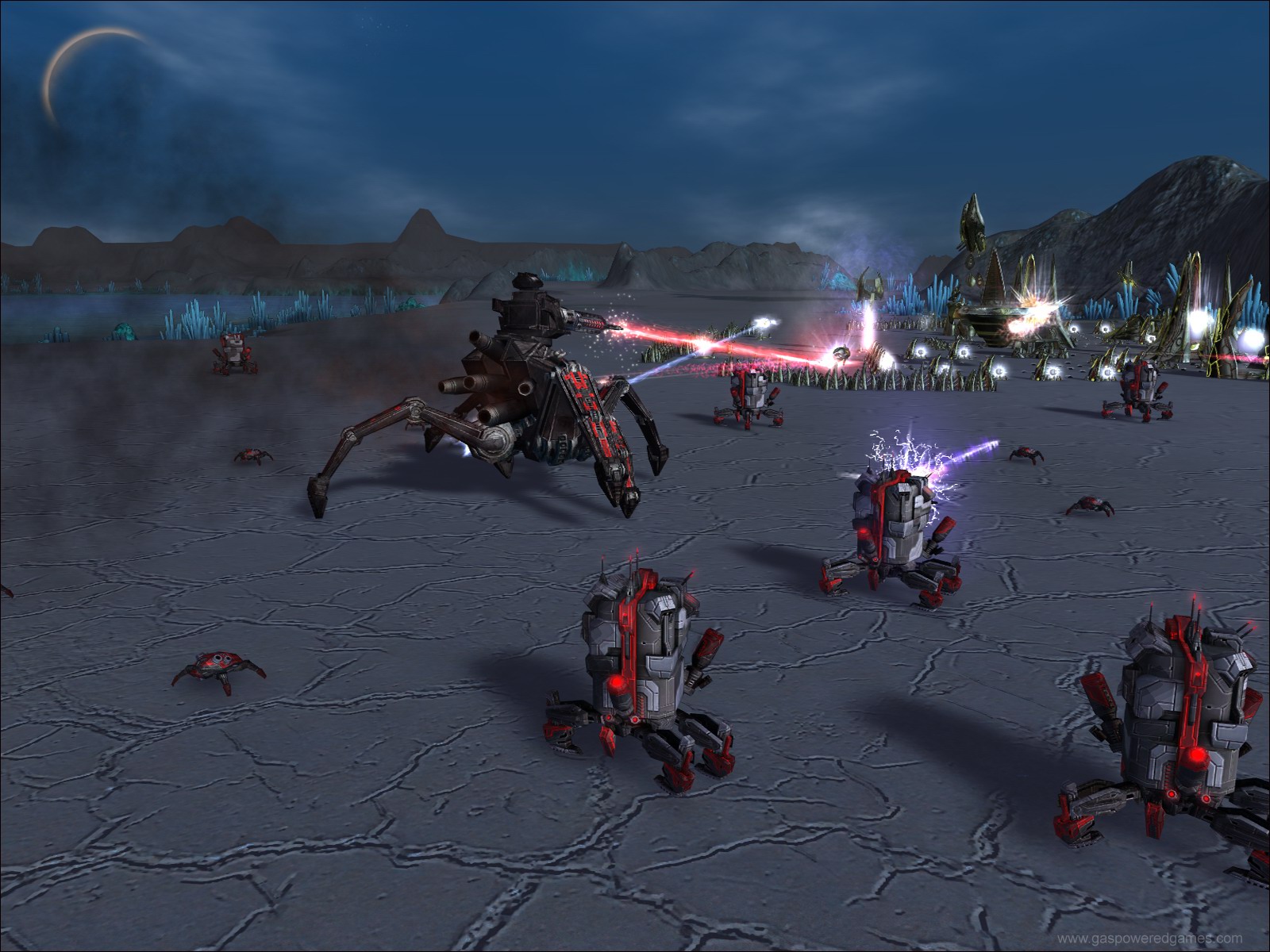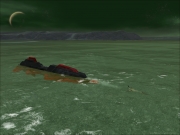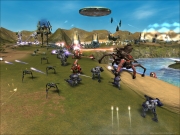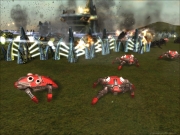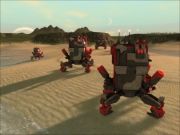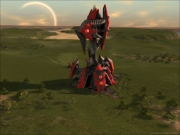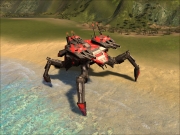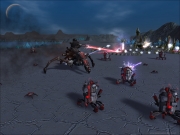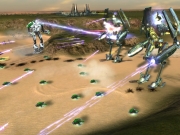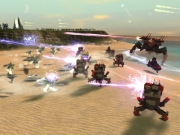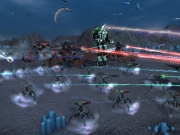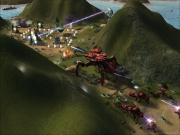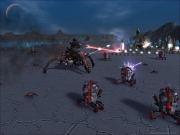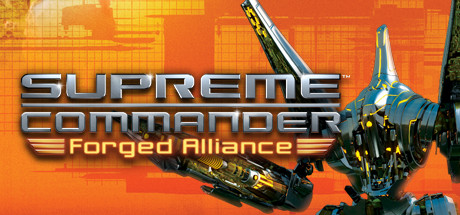Zitat:
This review is based on Supreme Commander: Forged Alliance with the LOUD Project installed. The LOUD Project is not compatible with Supreme Commander’s campaign, so this review only touches on skirmish mode and multiplayer.
Supreme Commander is a real-time strategy game that stands out from the pack due to a focus on large-scale combined arms warfare.
Gameplay – Unit Mechanics
Mechanically, Supreme Commander simplifies combat on an individual level but adds plenty of depth regarding macro strategy and the overarching flow of gameplay. It plays completely differently from a game like Starcraft II, in which units have different attributes that provide small but meaningful effects against certain unit types, such as Biological units being weak against Archons. In Supreme Commander, there are unit counters, but it isn’t done in a class-based system; it’s done through stats. A robot with low damage and a high fire rate will decimate large groups of weak enemies but struggle against singular, heavily armored vehicles. Similarly, a tank that fires slowly with high damage will perform well against more expensive units but will be overwhelmed by hordes of cheap soldiers. Most units are only capable of fighting land units, air units, or naval units, but that’s the extent of class-based counters. Due to this relatively basic system, Supreme Commander encourages you to build a combination of planes, ships, tanks, and robots. The lack of hard counters means that trying to win with an army made up of only a few different units will typically fail. A well-balanced force is the key to victory, and it helps avoid a Starcraft II meta, where the game has so many hard counters that high-level games are essentially over if you unknowingly build an army that your opponent has predicted and countered already.
Gameplay – Macro Strategy
Supreme Commander’s greatest strength is its complex macro strategy elements. Games are typically more relaxed and slower-paced because of the larger scale. This is reflected in the level design, with most maps consisting of large landmasses and varying water levels, further leading you down the path of military diversity. Battles can be between thousands of units at a time, with a chaotic mix of air, land, and sea forces. To complement your military, you also have access to an extensive array of defensive structures, from the standard walls and turrets to the more interesting nuclear missile launchers and long-range artillery installations. There are a few different strategies you can use, all with their own pros and cons. If you like playing defensively, you can build turrets and shield generators, ensuring your army will always have an advantage when fighting close to your base. More aggressive players can focus on building transport ships and units, allowing them to weaken the enemy base with small raids and skirmishes before committing to a full assault once they’ve built up a significant advantage. Conversely, a more middle-of-the-road player can choose a siege-oriented playstyle, building artillery and missile launchers to contain the enemy and prevent them from gaining ground. Supreme Commander is balanced around these three main styles of play and gives each faction the tools to both pull them off and defend against them.
Gameplay – Faction Variety
Supreme Commander features three factions with one more added in the Forged Alliance expansion. The UEF is the jack of all trades faction, relying on high health units and powerful defensive structures. The Cybran Nation is the hit-and-run faction, using stealth and versatility to cover up their main weakness, low health. Conversely, the Aeon Illuminate has units that fall into rigid categories with little flexibility but also possesses the strongest navy and air force to compensate. The DLC faction, the Seraphim, is a blend of the three main factions, giving it versatile units with good health and damage but a smaller roster, limiting unit variety. To further diversify each faction, tech levels limit the units available at each stage of the game. As time passes and resources are built up, a faction’s main strategy will change with the units it has access to. The highest tier of units, called experimental, requires huge amounts of resources to build but often have the power to win a game on their own.
Art and Graphics
Supreme Commander is not only a well-rounded strategy game, it also has an almost ageless look that wouldn’t be out of place in a recent RTS game. Without units, many maps are bland and forgettable. This was most likely done for technical reasons, as the game is 15 years old and designed for huge battles. Once battles get going, the maps become littered with the wreckage of different units, trees are destroyed, and craters are left by artillery and missile strikes. When playing a large multiplayer game, it’s easy to forget about the game for a minute or two and watch the battles taking place. Weapon effects look great, whether it’s traditional firearms, artillery, lasers, or missiles. The unit designs for each faction are internally consistent, making it easy to pick out which faction you are fighting and adding a lot of character to each unit. UEF units are bulky with rounded edges, Cybran units are angular and often feature insect-like legs, Seraphim units have bizarre designs that would fit a completely alien faction, while Aeon units look like humanity’s attempt to copy Seraphim technology. It comes together into an impressively coherent visual style that not only looks good but makes sense in the game world.
Sound
After the high bar set by Supreme Commander‘s visual presentation, the game’s soundtrack is underwhelming. It’s good for an RTS, but it’s still just background music. There’s nothing particularly memorable about most tracks. Conversely, the game’s soundscape is great and works perfectly with the visuals. Small, inexpensive units produce quiet, generic sound effects, while the monstrous experimental units have powerful sound effects and spectacular explosions when they’re destroyed. It gives a great sense of scale when combined with the excellent unit design.
LOUD Project
The LOUD Project has a significant impact on Supreme Commander, most notably affecting performance and gameplay. LOUD includes a handful of mods that come together into the “LOUD standard”, which is the intended experience. There are plenty of other mods included, but they’re mainly mods for customizing your experience rather than being the baseline like the LOUD standard. It covers new units and structures which seamlessly fit into the game, but it also overhauls the AI so they can properly use all of them. This AI overhaul significantly increases performance, allowing hundreds of additional units on screen while maintaining the same performance as the vanilla game. The resource production and storage system is also simplified in order to cut down on the number of structures and deal with some of the tedium in the base game when trying to manage your economy. LOUD does a little of everything without reinventing the wheel. It’s still the same game, just upgraded in every way.
Verdict
Supreme Commander is a fantastic RTS with well-deserved classic status. The gameplay is engaging and interesting, without being impenetrably complex. Thanks to the LOUD project, it shines in both single-player and multiplayer. Performance is stellar, especially compared to modern RTS games. It lacks any significant flaws and is a ton of fun to play. Highly recommended for classic RTS fans, specifically those that enjoy slower-paced games.
9/10
Zitat:
